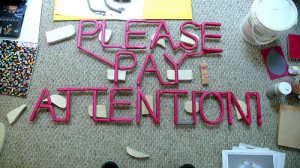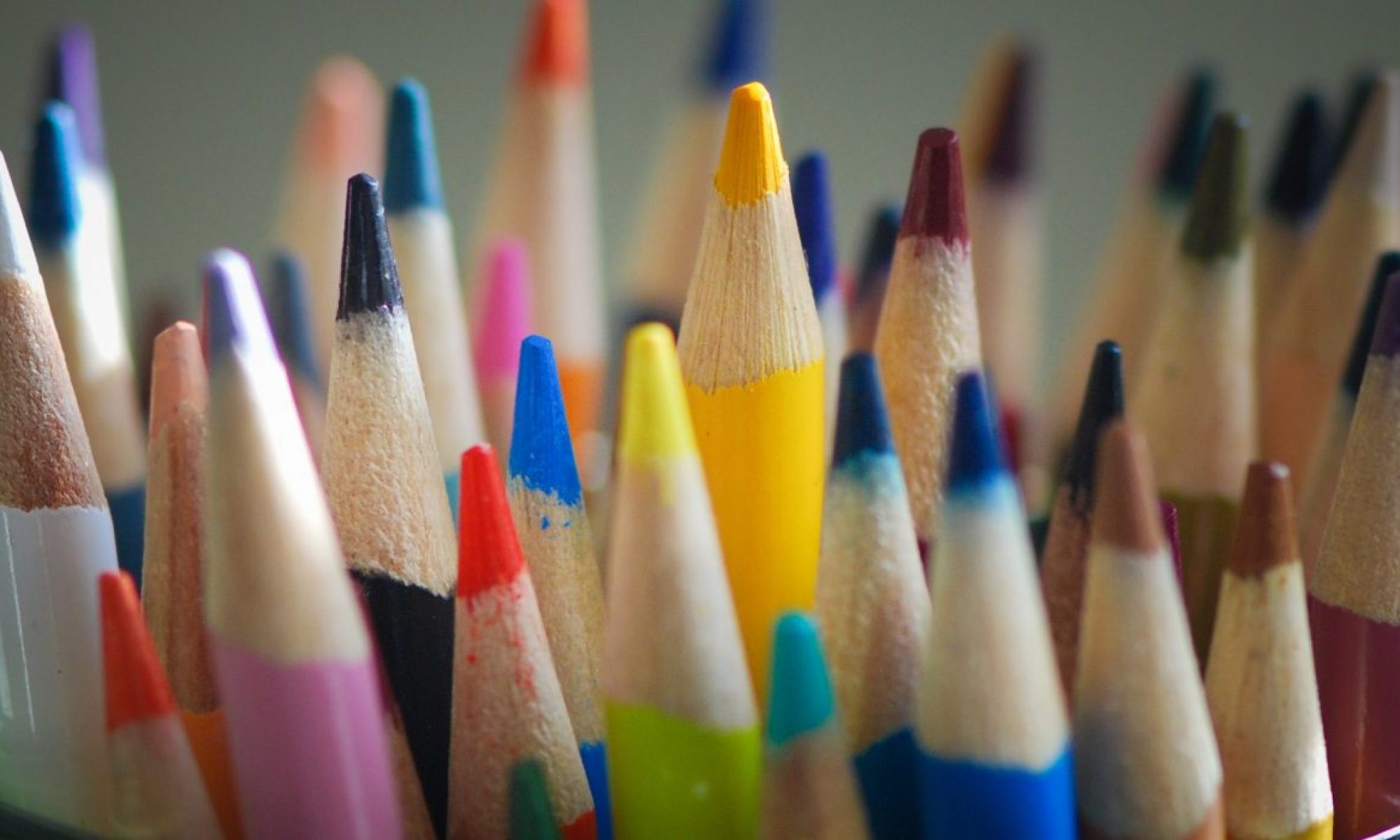
Working from home is hard. I remember thinking, “Oh, once the baby is here, I can work from home while he naps, it will be a breeze!” Ha. Silly. Being a stay-at-home mom trying to balance some semblance of a professional life is challenging to say the least.
There are so many demands on my energy and time at any given moment. Curriculum writing calls. Laundry beckons. Snuggling is a priority, of course. But when he’s content bouncing in his jumperoo, should I try to blog? Should I tackle some reads in my Feedly stream that’s busting at the seams? Should I continue work on curating elementary tech resources for my teachers? Should I get lost on Facebook for awhile? Maybe I should get a shower!
It’s hard to pay attention.
That fact has become more and more apparent over the past six months.
My administrative colleagues would sometimes comment on my ability to multitask during meetings. Am I a supertasker? Uh, I doubt it. Quality definitely suffers when I decide to remove my brain from the task at hand, even if only for a few seconds. It might be quality of product, process, or thought. But I really can’t perform to my fullest ability when I am distracted, whether it’s a digital distraction such as a notification that a new tweet has mentioned my name, or an analog distraction like the dog hair accumulating on the bookshelf, reminding me to dust as soon as possible. Do I sometimes tune out of conversations at meetings and instead focus my attention on completing tasks that require just a smidgen of cognitive effort, such as responding to emails or creating Google forms or checking other quick tasks off of my to-do list? Yes. Because I have little tolerance for rambling and meetings, in general. For whatever reason, those conversations couldn’t hold my attention when compared to what I could accomplish during that time using the device in front of me. Lately it’s been very easy for my mind to wander elsewhere while attempting to complete a task. Blame it on sleep deprivation or the fact that the to-do list is overflowing or that I’m trying to simultaneously soak up every magical moment in person with my son while also capturing it on camera/video because he’ll only be a baby for a short while and I must cement these memories by backing up to one of many Photostreams or Flickr or Instagram or something like that.
When I was younger and I assumed a not-so-ladylike attitude with my mother she would tell me I was “running off at the mouth” in an attempt to end my self-righteous rants. Well, now it feels like my brain is running off with itself. Can’t shut it off. So much to consider and do and so much to distract me from considering and doing it.
Imagine what our kids go through on a daily basis with a device (or two or three) in hand to use all day long in their classrooms. We ask them to tune out surrounding distractions to “Get to work.” Pay attention here. Don’t pay attention there. Don’t worry about what your best friend just tweeted or the photo you were tagged in. You can worry about that later. (Similar to how I’ll be trying not to notice #iste13 tweets flying by next month when I’m teaching my first graduate course that week!)
How can we help students pay attention? And what does that mean? To whom should they be paying that attention? To what? Are there tools available to help them do so? What strategies are effective in helping them learn how to make the most of their time online and in learning?
Thinking back to Howard Rheingold’s #etmooc session on Literacies of Attention, Crap Detection, Participation, Collaboration, and Network Know-How, I know that our attention is continually challenged by the digital demands (and not-so-digital demands) that surround us. He referenced the video of the texting girl who fell into the water fountain at the mall (a video I love to watch, because that is my local mall!) which is a clear example of how not paying attention can be detrimental to your health and productivity and self-esteem. Rheingold recorded his students as they used their laptops during his class and noticed that one of his students visited a webpage and checked email while Rheingold lectured, which we know is not atypical for students (and adults) today. What Rheingold wondered was, since the student was one of the most astute in his class and could recite the content of Rheingold’s lecture, was he one of the “supertaskers”? And was he born that way? Or did he learn something to allow him to conquer the art of paying attention?
Rheingold names attention as a 21st century social media literacy. And he believes that attention can be trained. He’s conducted a series of probes with his students to learn more about the dynamics of “attention literacy” in his classroom. He believes it’s necessary for students to learn how to turn on their “focused attention” when necessary and learn when it’s appropriate to task-switch. A simple way to train yourself to better attention is to use a tool like Netvibes which Rheingold teaches his students to use. He encourages the learner to “make your goals visible daily” which will help train your attention to what you want to get done. Another word of advice? Breathe. Rheingold shared that many people hold their breath when checking email, which is related to the fight/flight response. I hold my breath when I’m writing a blog post.
I’m doing it now.
Breathe.
Here’s another presentation about attention and learning from Rheingold. Worth checking out along with all of his resources on social media literacies. Watch the #etmooc presentation if you haven’t already.
I’m going to continue pondering how we help teachers and students engage mindfully with their devices in the classroom. I know that my work with teachers this summer will include this topic as we are transitioning to a 1:1 environment in our upper elementary grades, and teachers certainly will be cognizant about how students are utilizing their devices for learning and what they are paying attention to at any given time.
I’m going to start paying attention to attention. And also to the person sitting next to me. The sky and the flowers and the green grass. And the doggies.
I would love to hear how you have learned to manage distractions while working online and the tools/tricks/strategies you use to ensure peak productivity, both for yourself and your students/teachers. Please share in the comments below!
“Attention to intention is how the mind changes the brain.”
-Howard Rheingold
Photo Credit: untitledprojects via Compfight cc

I have one set of laptops for my classes and allow students to use their devices to do their bell-ringer on Edmodo and to take notes. When it is time to pay attention, i have them close their laptops (puts it in hibernate) and tell students with their own devices to put them on their desk face down. If they need to use their devices to take notes, I walk around my class to ensure they are doing what they are suppose to be doing, remotely controlling my Smartboard presentation using a program like Mobile Mouse via my iPad. Do I “overlook” occasional sociallizing with their devices? Yes, but only if they are done, did quality work, or have a “B” or above. I am the only teacher to get permission in our small rural school to allow students to use their own devices and so far I believe it has been a positive experience. Has it helped them with their grades? The jury is still out…